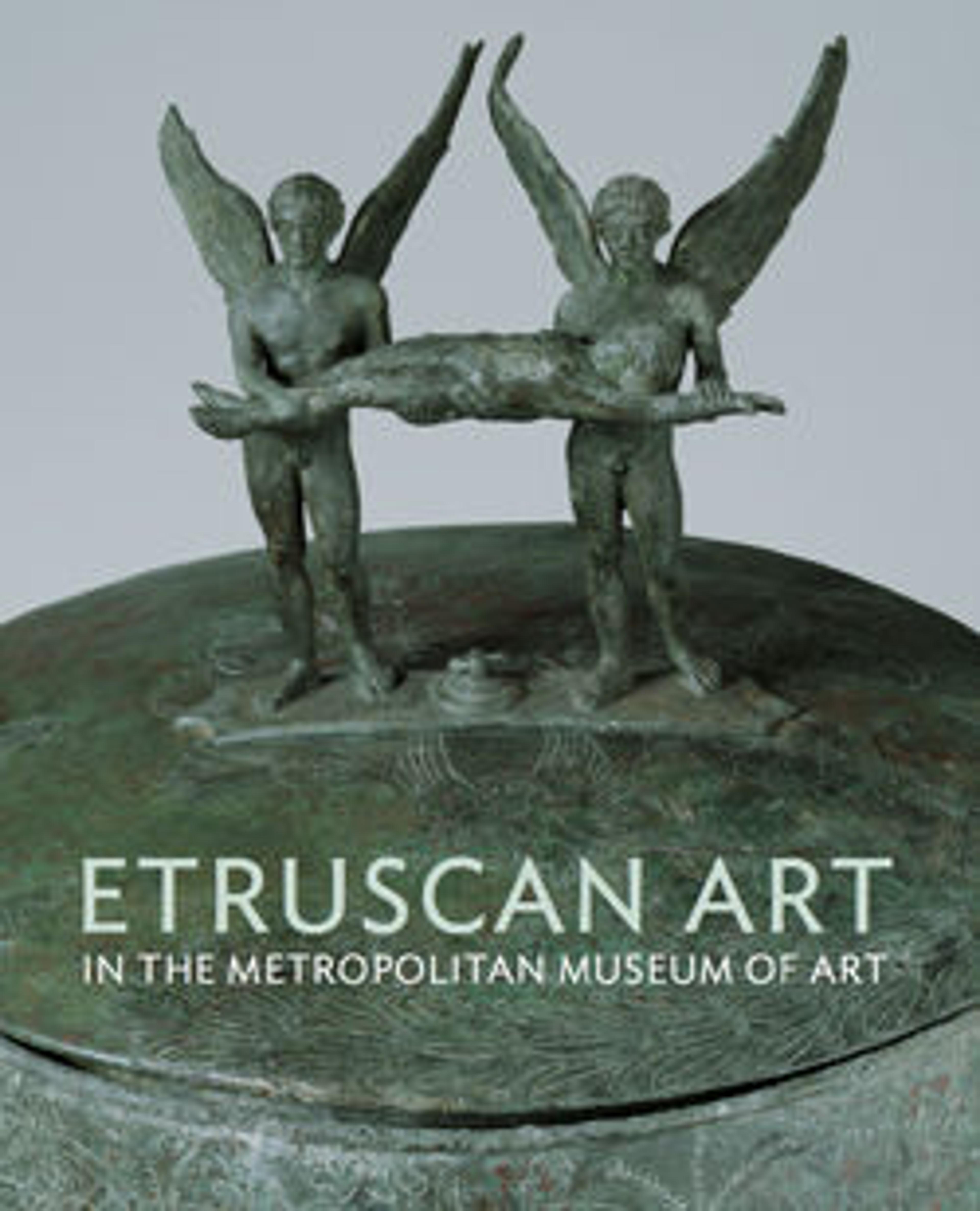Bronze and iron fittings from a cart or chariot
This large collection of bronze fittings, many with their iron or bronze nails still preserved, once belonged to a wheeled wooden cart or chariot. Because all the larger elements have a flat back, we can assume that they came from a vehicle that was basically rectilinear rather than curved like the Monteleone Chariot displayed in this gallery. In a number of instances, the same Etruscan tomb contained both a chariot and a light cart that perhaps served as a hearse to carry the deceased to the cemetery. The precise function of the vehicle represented here is uncertain.
Among the most interesting pieces is the large plate (29.131.3a) showing, in shallow relief, a seated youth playing the lyre. The pendant to this piece (29.131.3b) lacks the upper portion, where perhaps a related figure was once depicted. There are ten S-shaped reinforcement plates, eight of which are decorated with bearded snakes (29.131.3k1-k8). Pairs of these distinctive braces were probably mounted back-to-back against the wooden panels of the vehicle; indeed, some wooden fragments still adhere to them. The same bearded snakes appear on a larger, symmetrical element (29.131.3.q). Since such snakes are often brandished by death demons in Etruscan art, this specific iconographical detail may corroborate the interpretation that this is a funerary vehicle. Other elements, for example the plates with Gorgon heads and the sockets decorated with satyr or ram heads, may reinforce this funerary function. Many other pieces are completely undecorated, and some, for example the bronze rings, may belong to the harness.
Among the most interesting pieces is the large plate (29.131.3a) showing, in shallow relief, a seated youth playing the lyre. The pendant to this piece (29.131.3b) lacks the upper portion, where perhaps a related figure was once depicted. There are ten S-shaped reinforcement plates, eight of which are decorated with bearded snakes (29.131.3k1-k8). Pairs of these distinctive braces were probably mounted back-to-back against the wooden panels of the vehicle; indeed, some wooden fragments still adhere to them. The same bearded snakes appear on a larger, symmetrical element (29.131.3.q). Since such snakes are often brandished by death demons in Etruscan art, this specific iconographical detail may corroborate the interpretation that this is a funerary vehicle. Other elements, for example the plates with Gorgon heads and the sockets decorated with satyr or ram heads, may reinforce this funerary function. Many other pieces are completely undecorated, and some, for example the bronze rings, may belong to the harness.
Artwork Details
- Title:Bronze and iron fittings from a cart or chariot
- Period:Late Archaic–Early Classical
- Date:ca. 500–480 BCE
- Culture:Etruscan
- Medium:Bronze
- Dimensions:Other: 9 3/4 × 6 1/8 in. (24.8 × 15.6 cm)
- Classification:Bronzes
- Credit Line:Fletcher Fund, 1929
- Object Number:29.131.3a
- Curatorial Department: Greek and Roman Art
More Artwork
Research Resources
The Met provides unparalleled resources for research and welcomes an international community of students and scholars. The Met's Open Access API is where creators and researchers can connect to the The Met collection. Open Access data and public domain images are available for unrestricted commercial and noncommercial use without permission or fee.
To request images under copyright and other restrictions, please use this Image Request form.
Feedback
We continue to research and examine historical and cultural context for objects in The Met collection. If you have comments or questions about this object record, please contact us using the form below. The Museum looks forward to receiving your comments.
